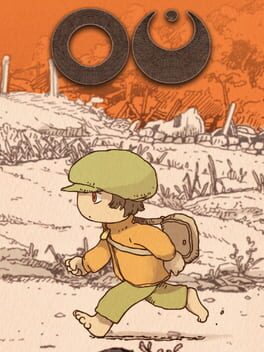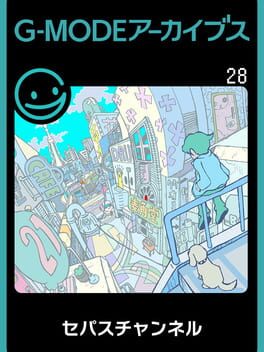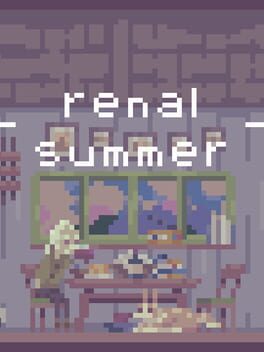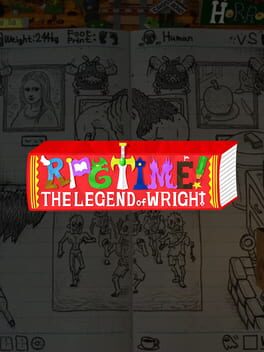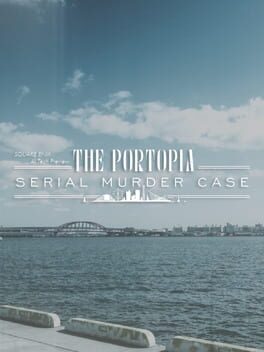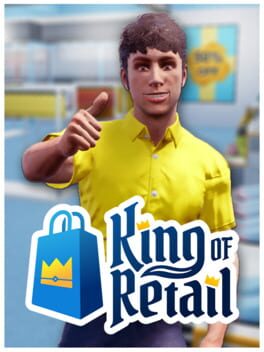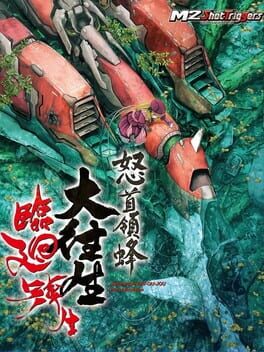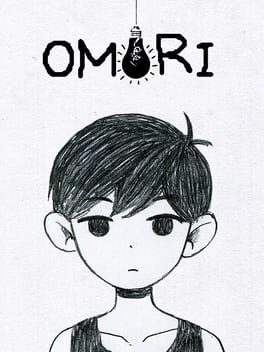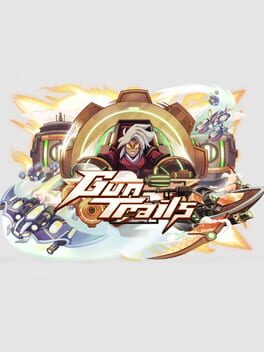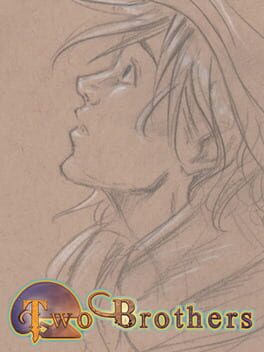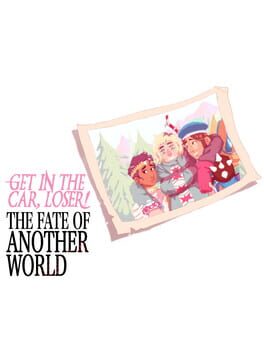oolongstains
1994
What do you even say about Earthbound in 2021? Saying the writing is good is obvious; playing this is like seeing where 50% of modern indie games got their inspiration from.
It's honestly impressive how good the timing of the humour is. Adding spaces and breaking up text boxes for expressiveness of joke delivery is common now but I can't think of anything else that was doing this in 1994?
The last boss is honestly still shocking in 2021, even after I've seen so many other things inspired by it. (That's my feeling about a lot of it - in 2021 I've seen so many of the things inspired by this game, and yet a lot of it still feels fresh and fascinating.)
I love how much it uses the intentional friction of its menu system for effect. Buy a ticket for the theatre at a counter, bring it over to the bouncer, show it to them from your inventory to be let in - many more steps than it has to be, but all with the effect of immersing you in the daily life of this little world. Even things like using the ATM to get your cash or calling your dad to save the game work in a way that slows the game down to get you to focus on the mundanity of life in this world. It's smart.
Everyone talks about how old RPGs are grindy and badly paced and they're mostly wrong because they just aren't interested in mechanics, but this is the game where it's right. For a battle system so simple, and with no strategy, they sure want you to be spending a lot of time with it. The encounter rate is incredibly high, stretching out many areas far longer than necessary, and individual battles are rarely interesting or have much strategic depth. They look and sound great, and the text is filled with personality, but the battles themselves are pretty poor.
A lot of Earthbound's peers were spending a lot of time experimenting with systems and thinking about what role these battles had in their gameplay loop. What made them interesting, what ensured battles contributed to the game's pacing, etc. Earthbound seems completely uninterested in these questions, which is surprising given how much else it's interested in questioning about 90s RPG design.
It's honestly impressive how good the timing of the humour is. Adding spaces and breaking up text boxes for expressiveness of joke delivery is common now but I can't think of anything else that was doing this in 1994?
The last boss is honestly still shocking in 2021, even after I've seen so many other things inspired by it. (That's my feeling about a lot of it - in 2021 I've seen so many of the things inspired by this game, and yet a lot of it still feels fresh and fascinating.)
I love how much it uses the intentional friction of its menu system for effect. Buy a ticket for the theatre at a counter, bring it over to the bouncer, show it to them from your inventory to be let in - many more steps than it has to be, but all with the effect of immersing you in the daily life of this little world. Even things like using the ATM to get your cash or calling your dad to save the game work in a way that slows the game down to get you to focus on the mundanity of life in this world. It's smart.
Everyone talks about how old RPGs are grindy and badly paced and they're mostly wrong because they just aren't interested in mechanics, but this is the game where it's right. For a battle system so simple, and with no strategy, they sure want you to be spending a lot of time with it. The encounter rate is incredibly high, stretching out many areas far longer than necessary, and individual battles are rarely interesting or have much strategic depth. They look and sound great, and the text is filled with personality, but the battles themselves are pretty poor.
A lot of Earthbound's peers were spending a lot of time experimenting with systems and thinking about what role these battles had in their gameplay loop. What made them interesting, what ensured battles contributed to the game's pacing, etc. Earthbound seems completely uninterested in these questions, which is surprising given how much else it's interested in questioning about 90s RPG design.
2009
"Hotel Dusk hybridized with a traditional Japanese menu-driven adventure game" was an interesting idea but it doesn't really work all that well. The first-person adventure sequences are a bit basic but interesting; the menu-driven sections are very generic, which would be okay if the story was more engaging. It ends up comparing a bit badly against Hotel Dusk given it's neither as mechanically interesting nor as well-written.
The plot was always going to be pretty by the numbers, but I feel like the incredibly rough translation has made it a lot worse. Nothing is really wrong, but it reads like a first draft that hasn't been edited to sound natural or to give it any personality whatsoever.
The plot was always going to be pretty by the numbers, but I feel like the incredibly rough translation has made it a lot worse. Nothing is really wrong, but it reads like a first draft that hasn't been edited to sound natural or to give it any personality whatsoever.
2023
Gentle, beautiful, poetic. This is a game to take slow and savour; it's not the kind of game to rush. I like enjoying this kind of scenery, I like imagining these sorts of spaces.
The use of "apply sticky notes to things you want to remember" as core game mechanic is inspired, especially in this kind of storybook thing.
The use of "apply sticky notes to things you want to remember" as core game mechanic is inspired, especially in this kind of storybook thing.
2008
Wow. What a game. As you can probably tell from how I'm writing this so long after my playthrough, it's stuck in my head.
In the west this gets compared to Mother/Earthbound a lot, but this is a game about individual characters and their very personal struggles that leads to a very different kind of storytelling than Mother goes for. The focus is less on the events, less on an epic world-scale story, and more about the very specific personal journeys of the protagonists.
I think Boy's existential struggle for "what does it mean to find your place in the world" is a pretty common feeling, but it's expressed with a depth and conviction that really comes through. His parasocial relationship with Sebastian is interesting to reevaluate in the era of streamers and "accessible" modern celebrities. It pairs interestingly with Sebastian's nervousness about taking responsibility for his own art, his ambivalence as to whether anything he says matters.
Bonnie's arc is maybe the most nuanced and interesting, not only her struggles with her own art and what it means to expect something from an audience when she shares it, but also her struggles with how and whether to live in the future.
It's impressive how smart the map design is. This is a feature phone game - it couldn't have had more than 512KB of storage. The very clever reuse of maps, having characters retread their journeys frequently, is a smart way of making the most of what they have. Instead of feeling repetitive, it encourages you to develop a very close, personal relationship with the city.
I dearly hope this gets a translation of some kind someday. I want more people to be able to experience it.
In the west this gets compared to Mother/Earthbound a lot, but this is a game about individual characters and their very personal struggles that leads to a very different kind of storytelling than Mother goes for. The focus is less on the events, less on an epic world-scale story, and more about the very specific personal journeys of the protagonists.
I think Boy's existential struggle for "what does it mean to find your place in the world" is a pretty common feeling, but it's expressed with a depth and conviction that really comes through. His parasocial relationship with Sebastian is interesting to reevaluate in the era of streamers and "accessible" modern celebrities. It pairs interestingly with Sebastian's nervousness about taking responsibility for his own art, his ambivalence as to whether anything he says matters.
Bonnie's arc is maybe the most nuanced and interesting, not only her struggles with her own art and what it means to expect something from an audience when she shares it, but also her struggles with how and whether to live in the future.
It's impressive how smart the map design is. This is a feature phone game - it couldn't have had more than 512KB of storage. The very clever reuse of maps, having characters retread their journeys frequently, is a smart way of making the most of what they have. Instead of feeling repetitive, it encourages you to develop a very close, personal relationship with the city.
I dearly hope this gets a translation of some kind someday. I want more people to be able to experience it.
2020
This game is fascinating.
The adoption of mobile game mechanics is really smart. In many games, details such as the time nudges, the requirement to log in regularly multiple times a day, and so on are designed to extract more money from the player. Renal Summer doesn't have microtransactions beyond a single "remove ads" payments, so it's able to use those same mechanics in very different ways. Over the seven days of the story, I felt compelled to check in on the dog to help them as much as I could. As soon as I realized their strength was fading, and I'd have to help more often to keep them able to live their normal life, it felt important for me to check in regularly even before the regular notification nags.
In general, the sad theme comes across as convincingly non-manipulative. It's very, very easy for a game about death to come across as either cloying or emotionally manipulative, but Renal Summer manages to be moving without being mawkish.
The retro aesthetic is a smart choice since it makes you expect something much more "gamey" than it actually is. There's a fascinating contrast between the game field, the very gamey playfield the player can actually interact with, and the naturalistic movements in the world outside which the player can only watch. The lifelike, smooth movement of the animation reminds me a lot of Ghost Trick; adopting the aesthetics of pixel art, but moving in a natural-feeling way that's only possible if the player isn't directly controlling any of the living characters.
The real-time nature of the storytelling is incredibly well-produced. Every little scene you witness feels realistic and honest, and the full 24-hour daily schedule the dog and the old man go through is incredibly detailed.
The adoption of mobile game mechanics is really smart. In many games, details such as the time nudges, the requirement to log in regularly multiple times a day, and so on are designed to extract more money from the player. Renal Summer doesn't have microtransactions beyond a single "remove ads" payments, so it's able to use those same mechanics in very different ways. Over the seven days of the story, I felt compelled to check in on the dog to help them as much as I could. As soon as I realized their strength was fading, and I'd have to help more often to keep them able to live their normal life, it felt important for me to check in regularly even before the regular notification nags.
In general, the sad theme comes across as convincingly non-manipulative. It's very, very easy for a game about death to come across as either cloying or emotionally manipulative, but Renal Summer manages to be moving without being mawkish.
The retro aesthetic is a smart choice since it makes you expect something much more "gamey" than it actually is. There's a fascinating contrast between the game field, the very gamey playfield the player can actually interact with, and the naturalistic movements in the world outside which the player can only watch. The lifelike, smooth movement of the animation reminds me a lot of Ghost Trick; adopting the aesthetics of pixel art, but moving in a natural-feeling way that's only possible if the player isn't directly controlling any of the living characters.
The real-time nature of the storytelling is incredibly well-produced. Every little scene you witness feels realistic and honest, and the full 24-hour daily schedule the dog and the old man go through is incredibly detailed.
Man, what a delight. I only knew a little bit about this going in and kind of figured it would be a normal-ish RPG with a cute art style.
I've rarely seen a game be so absolutely full of ideas. Every single screen manages to surprise me with a new visual gag, a new gameplay idea, a new metatextual gag. The use of pencil-drawn art and real-world art supplies is cute and it keeps coming up with new things to do with them right up until the end.
Can't remember the last game I played that had this many laugh out loud moments. I'm glad I played this with two other people in the room, because it's a perfect game to share "did that just happen?!" reactions with other people.
I've rarely seen a game be so absolutely full of ideas. Every single screen manages to surprise me with a new visual gag, a new gameplay idea, a new metatextual gag. The use of pencil-drawn art and real-world art supplies is cute and it keeps coming up with new things to do with them right up until the end.
Can't remember the last game I played that had this many laugh out loud moments. I'm glad I played this with two other people in the room, because it's a perfect game to share "did that just happen?!" reactions with other people.
2022
What happened here?
The opening and first area gave a really positive impression. There's a lot of room to navigate the city in a catty way, climbing around on surfaces, scratching things, slipping through someone's legs when they're not paying attention to sneak into a building. For a bit, it seems like they really are interested in the questions about "what does it mean for a cat to navigate this world, how would they experience it".
After a certain point it feels like they've run out of ideas, and what they fall back on is the most boring gameplay tropes imaginable. One scene has you activating a loud elevator that slowly descends while you dodge zombies, like any 2006-era action game for the 360. In another you avoid flashlight beams in the most boring, by-the-numbers stealth sequence, with drones ready to shoot your little cat dead. They don't give you any sense of real tension, any narrative reasons to care about them, they're just boring and embarassing filler. Worse, they don't make any use at all of your being a cat. They seem to have forgotten to consider that maybe a cat might have different ways of moving through the world like in the open world sections. You could have made these exact scenes with a generic human and wouldn't have to change a single thing. I might have felt better about them if they didn't make up at least 75% of the game.
The story emphasizes that this isn't a story about a cat at all. The robot doesn't get the focus just because he can speak, but because they don't seem to have thought about the cat as being capable of having real emotions or motivations. The cat doesn't seem to want to go anywhere, doesn't seem to want to do anything. Aside from a couple of scenes where they're briefly injured, and one of the final scenes, the game doesn't really care about presenting the cat's emotional state at all. The developers don't seem to have had any confidence in their ability to tell a story about someone who's not human and how they experience the world, so they didn't even try. What they did make is as clichéd as I could imagine, and every single twist and attempt at an emotional moment is predictable and weakly told.
I felt a little better about the game before the final action scenes, which are so frustrating and so badly matched to the rest of the game that I just wanted it to be over.
The opening and first area gave a really positive impression. There's a lot of room to navigate the city in a catty way, climbing around on surfaces, scratching things, slipping through someone's legs when they're not paying attention to sneak into a building. For a bit, it seems like they really are interested in the questions about "what does it mean for a cat to navigate this world, how would they experience it".
After a certain point it feels like they've run out of ideas, and what they fall back on is the most boring gameplay tropes imaginable. One scene has you activating a loud elevator that slowly descends while you dodge zombies, like any 2006-era action game for the 360. In another you avoid flashlight beams in the most boring, by-the-numbers stealth sequence, with drones ready to shoot your little cat dead. They don't give you any sense of real tension, any narrative reasons to care about them, they're just boring and embarassing filler. Worse, they don't make any use at all of your being a cat. They seem to have forgotten to consider that maybe a cat might have different ways of moving through the world like in the open world sections. You could have made these exact scenes with a generic human and wouldn't have to change a single thing. I might have felt better about them if they didn't make up at least 75% of the game.
The story emphasizes that this isn't a story about a cat at all. The robot doesn't get the focus just because he can speak, but because they don't seem to have thought about the cat as being capable of having real emotions or motivations. The cat doesn't seem to want to go anywhere, doesn't seem to want to do anything. Aside from a couple of scenes where they're briefly injured, and one of the final scenes, the game doesn't really care about presenting the cat's emotional state at all. The developers don't seem to have had any confidence in their ability to tell a story about someone who's not human and how they experience the world, so they didn't even try. What they did make is as clichéd as I could imagine, and every single twist and attempt at an emotional moment is predictable and weakly told.
I felt a little better about the game before the final action scenes, which are so frustrating and so badly matched to the rest of the game that I just wanted it to be over.
0-star port of a really interesting piece of gaming history.
It takes a lot of skill to port an old text parser game and have it be worse than the original. The fuzzy matching means that sometimes it works and sometimes it doesn't, and it's incredibly hard to figure out how or why. A less intelligent parser like in the original would have been easier to work with because at least it's predictable, and you can develop an internal model of how to talk to the game. Here, you're constantly guessing.
As a game, Portopia has the loose style of storytelling that a lot of early computer mystery games did. Modern players might find it offputting, but it works well and it's easy to see why it was such a big deal in 1983. The ludicrous ending twist is hard for players to guess, in a bad way, but overall it still lands.
It takes a lot of skill to port an old text parser game and have it be worse than the original. The fuzzy matching means that sometimes it works and sometimes it doesn't, and it's incredibly hard to figure out how or why. A less intelligent parser like in the original would have been easier to work with because at least it's predictable, and you can develop an internal model of how to talk to the game. Here, you're constantly guessing.
As a game, Portopia has the loose style of storytelling that a lot of early computer mystery games did. Modern players might find it offputting, but it works well and it's easy to see why it was such a big deal in 1983. The ludicrous ending twist is hard for players to guess, in a bad way, but overall it still lands.
2019
If you know the original game, or if you know M2, you don't really need to ask "is the game good" or "is the port good" - you know the game's good, and you know the port will be great.
Dai-Ou-Jou is one of those games shmup people talk about a lot, but for good reason - it's a genuine classic, and it's still just as good today. The core, elemental mechanics - a laser that slices through enemies and slows you down for precision dodging, a shot that lets you move fast while taking out small enemies - are common to a lot of shmups, but they're executed flawlessly here. Its signature mechanic, the hyper attack, is still just as satisfying. Playing well enough to earn the hyper lets you turn the tables to do incredible damage to enemies, taking out waves or bosses that feel impossible otherwise; the feeling of power after being under pressure feels great.
The new arrange pilots are great, and a lot of fun. I wasn't sure what to expect, but they change up the core gameplay in very interesting ways. They're also all easier than the core game, but they use the original game's enemy placement and bullet patterns; learning the arrange pilots is still learning the "real" arcade game. It's a fantastic bridge for intermediate players who want something more substantial than super easy mode, not to mention something I enjoy playing when I want to actually see more than 1-2 levels in a run. I'm not good enough to master the original arcade game yet, much as I'm working on it!
All three of the arrange pilots play with the original game's push and pull of safety in new ways. Arrange-L and Arrange-EX let you erase bullets from heavy enemies by training your laser on them long enough - build up a focus meter by keeping your laser on them, and every bullet of theirs that's still onscreen turns into point pickups. Not only does it make the game easier, it opens up some interesting new strategies. It starts to get tempting to let heavy enemies live a bit longer so they leave more bullets onscreen, giving you more points when you take them out. The brief moment of safety when those bullets turn into harmless score pickups is a breath of relief that this game doesn't offer much of, but it's the kind of push and pull of "accept risk to get a little extra reward" that I appreciate about my favourite Cave games, just like SDOJ Exa Label and Akai Katana Shin. Arrange-L and EX also have auto-bomb/hyper on by default, saving the skin of players who missed bombing at the right time to avoid death, which also helps extend runs a bit longer, and players are given extra lives for beating bosses so runs go longer.
If I have a single complaint, it's that most of the content is focused on the original "white label" arcade release. I do think the balance in Black Label is better, so I'm surprised it's treated like a bonus feature. That side, Black Label and the English Dodonpachi III have all the same extra features and presentation as white label, so it's not a huge deal, just an oddity.
One of these days, I'll finally manage a 1CC of the main game, and I'll treasure every blissful death on the way. But in the meantime, I'm also working towards 1CCs of Arrange-L and Arrange-EX and loving every minute of it.
Dai-Ou-Jou is one of those games shmup people talk about a lot, but for good reason - it's a genuine classic, and it's still just as good today. The core, elemental mechanics - a laser that slices through enemies and slows you down for precision dodging, a shot that lets you move fast while taking out small enemies - are common to a lot of shmups, but they're executed flawlessly here. Its signature mechanic, the hyper attack, is still just as satisfying. Playing well enough to earn the hyper lets you turn the tables to do incredible damage to enemies, taking out waves or bosses that feel impossible otherwise; the feeling of power after being under pressure feels great.
The new arrange pilots are great, and a lot of fun. I wasn't sure what to expect, but they change up the core gameplay in very interesting ways. They're also all easier than the core game, but they use the original game's enemy placement and bullet patterns; learning the arrange pilots is still learning the "real" arcade game. It's a fantastic bridge for intermediate players who want something more substantial than super easy mode, not to mention something I enjoy playing when I want to actually see more than 1-2 levels in a run. I'm not good enough to master the original arcade game yet, much as I'm working on it!
All three of the arrange pilots play with the original game's push and pull of safety in new ways. Arrange-L and Arrange-EX let you erase bullets from heavy enemies by training your laser on them long enough - build up a focus meter by keeping your laser on them, and every bullet of theirs that's still onscreen turns into point pickups. Not only does it make the game easier, it opens up some interesting new strategies. It starts to get tempting to let heavy enemies live a bit longer so they leave more bullets onscreen, giving you more points when you take them out. The brief moment of safety when those bullets turn into harmless score pickups is a breath of relief that this game doesn't offer much of, but it's the kind of push and pull of "accept risk to get a little extra reward" that I appreciate about my favourite Cave games, just like SDOJ Exa Label and Akai Katana Shin. Arrange-L and EX also have auto-bomb/hyper on by default, saving the skin of players who missed bombing at the right time to avoid death, which also helps extend runs a bit longer, and players are given extra lives for beating bosses so runs go longer.
If I have a single complaint, it's that most of the content is focused on the original "white label" arcade release. I do think the balance in Black Label is better, so I'm surprised it's treated like a bonus feature. That side, Black Label and the English Dodonpachi III have all the same extra features and presentation as white label, so it's not a huge deal, just an oddity.
One of these days, I'll finally manage a 1CC of the main game, and I'll treasure every blissful death on the way. But in the meantime, I'm also working towards 1CCs of Arrange-L and Arrange-EX and loving every minute of it.
2022
Now this is what RPGs are all about.
What a great game. Managing to make each campaign so distinctive, so well-paced and interesting within their short runtime is incredible. Especially when they're so experimental and all going for such different things from each other.
The Far Future chapter is especially incredible, managing to pull off that kind of pacing without any combat at all in 1994 is so ambitious. Wonder if they'd played Ihatov Monogatari.
The new stuff from the remake is generally pretty great, but I felt like the radar was a bit too aggressive in making sure players never get lost. There are moments in the Far Future and Near Future chapters where the player should feel lost and stressed, and the radar is actively getting in the way of that by always telling you where your next step is.
What a great game. Managing to make each campaign so distinctive, so well-paced and interesting within their short runtime is incredible. Especially when they're so experimental and all going for such different things from each other.
The Far Future chapter is especially incredible, managing to pull off that kind of pacing without any combat at all in 1994 is so ambitious. Wonder if they'd played Ihatov Monogatari.
The new stuff from the remake is generally pretty great, but I felt like the radar was a bit too aggressive in making sure players never get lost. There are moments in the Far Future and Near Future chapters where the player should feel lost and stressed, and the radar is actively getting in the way of that by always telling you where your next step is.
2020
This review contains spoilers
I'm really torn on Omori. For context, I played the "good ending" route without the bonus Basil scene.
I don't mind messy RPG Maker games - in fact I love a lot of them - but parts of Omori are messy in ways that aren't interesting. The early game especially tends towards weak map design and merely "okay" cute wacky story sequences that didn't really pull me in.
There's an interesting tension in the fantasy world sequences about how invested you can really get in what you know isn't real, about these characters you know are fake in the game's own fiction - but that tension doesn't really hold for ~10-15 hours of gameplay.
Up until the last few hours I thought it was okay, if not great. The late-game twist feels, honestly, incredibly unearned and mawkish. It feels timed and written to prioritize shocking the player and making the player feel sad over accomplishing its narrative and thematic goals. I see a lot of players making memes about how sad the game made them, so I guess it worked for some people, but it just didn't land right for me.
According to the wiki, there's internal text for the "Truth" photo album that tells the story of Mari's death in lurid detail. It feels intended specifically for wiki dataminers who need every detail, and, honestly, those details are better left untold. The scene's more effective by being told vaguely and leaving the player room to interpret; leaving it carefully written out frankly takes away from it. Worse, it makes players start thinking about whether it's even possible for it to have happened, and at the point players are thinking about "could this even work" you've lost the mindset you need for this kind of horror to work.
For the same reasons, I ended up finding Basil a more interesting and nuanced character. You're not given as much detail about what happened with him, or how to think about him, and it leaves a lot more room to think about it.
A version of Omori that's about 10 hours shorter and less focused on "making players sad" would be a lot more interesting.
I don't mind messy RPG Maker games - in fact I love a lot of them - but parts of Omori are messy in ways that aren't interesting. The early game especially tends towards weak map design and merely "okay" cute wacky story sequences that didn't really pull me in.
There's an interesting tension in the fantasy world sequences about how invested you can really get in what you know isn't real, about these characters you know are fake in the game's own fiction - but that tension doesn't really hold for ~10-15 hours of gameplay.
Up until the last few hours I thought it was okay, if not great. The late-game twist feels, honestly, incredibly unearned and mawkish. It feels timed and written to prioritize shocking the player and making the player feel sad over accomplishing its narrative and thematic goals. I see a lot of players making memes about how sad the game made them, so I guess it worked for some people, but it just didn't land right for me.
According to the wiki, there's internal text for the "Truth" photo album that tells the story of Mari's death in lurid detail. It feels intended specifically for wiki dataminers who need every detail, and, honestly, those details are better left untold. The scene's more effective by being told vaguely and leaving the player room to interpret; leaving it carefully written out frankly takes away from it. Worse, it makes players start thinking about whether it's even possible for it to have happened, and at the point players are thinking about "could this even work" you've lost the mindset you need for this kind of horror to work.
For the same reasons, I ended up finding Basil a more interesting and nuanced character. You're not given as much detail about what happened with him, or how to think about him, and it leaves a lot more room to think about it.
A version of Omori that's about 10 hours shorter and less focused on "making players sad" would be a lot more interesting.
2023
I really wanted to like this, but it ended up being a pretty big disappointment.
The art and music are great - it feels like aesthetics were their major focus. Playability suffers a lot though. The focus on detailed sprites means your ship and enemies are enormous despite the small screen, which gives you very little space to maneuver. It's even worse because your ship's speed is so fast; you want the ability to move slowly to dodge large waves of bullets, but you don't get that here. Since the screen is so crowded with large sprites enemies have a tendency to spawn out of nowhere, which makes it even more dangerous to move. It seems to be influenced by Cave games but doesn't really take into account that they make ship positioning a big part of gameplay - Gun Trails actively discourages you from moving around the screen or trying to stake out a position.
The super weapon feels like an attempt to do a take on Dodonpachi's hyper - a strong laser that does high damage, and that charges up as you maintain enemy combos. Unfortunately, the game intentionally takes away any stored charge when you encounter minibosses, which denies you the ability to use a stored up super weapon in exactly the time you'd want to use it. It's also the only way to slow down your ship's movement, which feels awkward and limited.
After playing I booted up GG Aleste again and it reminded me how other portable shmups on small screens have intentionally gone for smaller sprites to maintain maneuverability and the sense of a larger playfield. I found myself wishing Gun Trails had made the same choice.
The art and music are great - it feels like aesthetics were their major focus. Playability suffers a lot though. The focus on detailed sprites means your ship and enemies are enormous despite the small screen, which gives you very little space to maneuver. It's even worse because your ship's speed is so fast; you want the ability to move slowly to dodge large waves of bullets, but you don't get that here. Since the screen is so crowded with large sprites enemies have a tendency to spawn out of nowhere, which makes it even more dangerous to move. It seems to be influenced by Cave games but doesn't really take into account that they make ship positioning a big part of gameplay - Gun Trails actively discourages you from moving around the screen or trying to stake out a position.
The super weapon feels like an attempt to do a take on Dodonpachi's hyper - a strong laser that does high damage, and that charges up as you maintain enemy combos. Unfortunately, the game intentionally takes away any stored charge when you encounter minibosses, which denies you the ability to use a stored up super weapon in exactly the time you'd want to use it. It's also the only way to slow down your ship's movement, which feels awkward and limited.
After playing I booted up GG Aleste again and it reminded me how other portable shmups on small screens have intentionally gone for smaller sprites to maintain maneuverability and the sense of a larger playfield. I found myself wishing Gun Trails had made the same choice.
2013
I feel like I'm usually pretty patient, but man. This is easily one of the worst games I've ever played.
Lots of enthusiasm, very little understanding of what makes a game tick.
It's very excited about making you read lots of very poor, florid writing. Your wife gets referred to as your "loving wife" 12 times before she's killed in a scripted encounter 2 minutes into the game.
You switch resolutions by typing "1" through "9" on your keyboard, and any option you pick makes the window disappear permanently. You enable gamepad controls by hitting the "3" key on your keyboard in the options menu. Stepping into most walls gets you stuck or lets you clip through.
The map design is slapdash in a way a lot of amateur map design is, with wide open spaces and escher-like mashing up of verticality into flat spaces. In a Yume Nikki-like game this could work really well, but this game doesn't seem aware that its map design is weird, or that its "bad" properties could make it interesting.
Lots of enthusiasm, very little understanding of what makes a game tick.
It's very excited about making you read lots of very poor, florid writing. Your wife gets referred to as your "loving wife" 12 times before she's killed in a scripted encounter 2 minutes into the game.
You switch resolutions by typing "1" through "9" on your keyboard, and any option you pick makes the window disappear permanently. You enable gamepad controls by hitting the "3" key on your keyboard in the options menu. Stepping into most walls gets you stuck or lets you clip through.
The map design is slapdash in a way a lot of amateur map design is, with wide open spaces and escher-like mashing up of verticality into flat spaces. In a Yume Nikki-like game this could work really well, but this game doesn't seem aware that its map design is weird, or that its "bad" properties could make it interesting.


